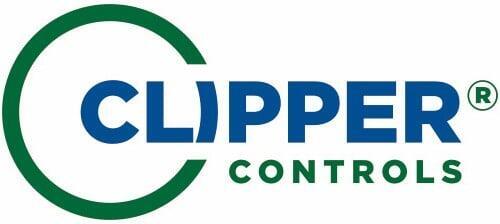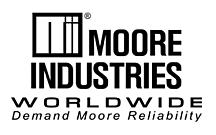
Signal Interface & Conditioning Equipment
Clipper Controls offers a comprehensive range of signal interface and conditioning equipment designed to maintain signal integrity, improve measurement accuracy, and enhance system safety. Our solutions convert, isolate, split, and amplify process signals to ensure compatibility with control systems and instrumentation, even in challenging industrial environments. With trusted technologies from leading manufacturers, we support reliable signal transmission across applications in oil and gas, water treatment, chemical processing, power generation, and more. Explore our signal interface and conditioning solutions below:
Signal Isolators
Application: Signal isolators play a vital role in maintaining signal integrity by electrically separating input and output signals. They eliminate ground loops, reduce electrical noise, and protect connected devices from surges and transients. We offer isolators designed for compatibility with analog and digital signals across a range of current and voltage types, ensuring accurate, interference-free transmission in control systems, PLCs, and remote I/O applications.
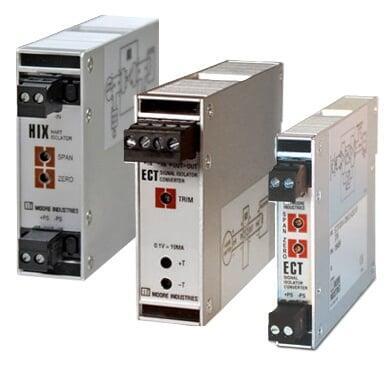
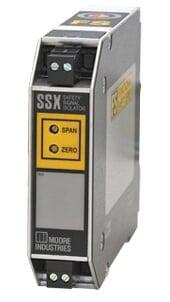
SIL-Rated Signal Isolators
SIL-rated signal isolators ensure safe, reliable signal transmission in safety-instrumented systems. We provide models certified for use in demanding SIL1 to SIL3 applications.
Signal Splitters
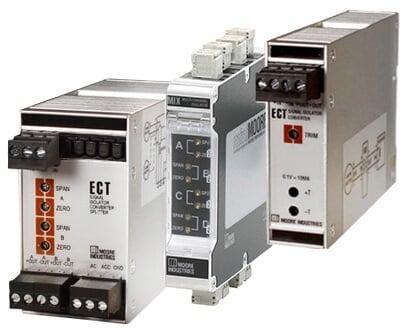
SIL-Rated Signal Splitters
SIL-rated signal splitters deliver safe, redundant signal distribution in safety systems. We offer models certified for SIL1 to SIL3 to support critical applications.
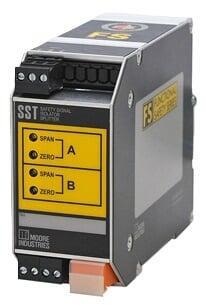
Signal Boosters
Application: Signal boosters amplify low-level signals to overcome losses caused by long cable runs, high-resistance loads, or passive devices in a loop. They are crucial in maintaining signal strength and accuracy in large-scale or distributed control systems. We provide boosters compatible with both current and voltage signals, ensuring reliable transmission from remote sensors to centralized monitoring equipment. Designed for durability and precision, our boosters help maintain signal integrity in harsh industrial environments.
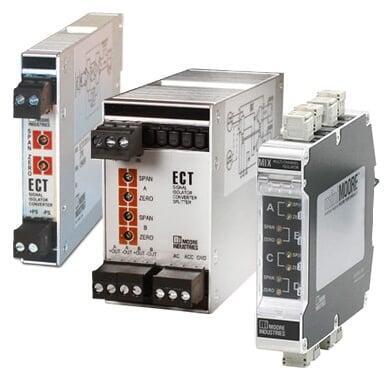
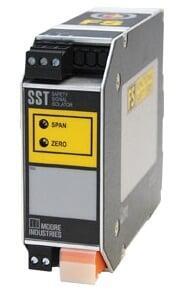
SIL-Rated Signal Boosters
SIL-rated signal boosters amplify signals in safety-instrumented loops. We supply certified models for SIL1 to SIL3 applications requiring high-integrity transmission.
Need Help?
Our Crew is Here To Serve You!
Signal Interface & Conditioning Applications
Energy & Utilities Applications
In the power generation and distribution industry, reliable and accurate signal transmission is critical for maintaining system stability, optimizing performance, and ensuring personnel safety.
Turbine and Generator Monitoring
Instrumentation Used: Signal isolators and conditioners receive analog inputs from temperature sensors (RTDs, thermocouples), vibration sensors, and speed pickups, converting them into standardized signals (e.g., 4–20 mA) for SCADA or DCS integration.
Substation Automation and Protection
Instrumentation Used: Signal isolators are used to eliminate ground loops and protect control equipment from high voltage surges. Signal splitters distribute current and voltage signals from CTs and PTs to multiple monitoring and recording devices.
Boiler and Combustion Control
Instrumentation Used: Signal conditioners are used to normalize and filter inputs from pressure transmitters and thermocouples. Signal boosters ensure that analog signals from field instruments reach the control room intact despite long cable runs.
Renewable Energy Integration (Solar, Wind)
Instrumentation Used: Signal converters are used to interface between disparate sensor types and centralized monitoring systems. Signal repeaters are deployed to maintain signal integrity over long cable distances, especially in large-scale solar farms and wind parks.
Grid Monitoring and Load Balancing
Instrumentation Used: Signal isolators and splitters allow these measurements to be routed to multiple control centers and historical logging systems without interference or degradation.
Environmental and Emissions Monitoring
Instrumentation Used: Signal conditioners standardize the output from gas analyzers, flow meters, and pH sensors for integration with environmental reporting software and compliance systems.
Oil & Gas Extraction, Refining, & Transportation Applications
The oil and gas industry operates in some of the harshest environments with strict safety, accuracy, and reliability requirements.
Wellhead Monitoring and Control (Upstream)
Instrumentation Used: Signal isolators protect control systems from high-voltage transients and ground loops. Signal boosters are used to maintain signal strength from field transmitters located far from centralized control systems.
Separation and Processing Systems
Instrumentation Used: Signal conditioners convert and linearize signals from non-standard sensors. Signal converters interface different sensor outputs with control systems that require specific input types.
Pipeline Monitoring and Leak Detection (Midstream)
Instrumentation Used: Signal repeaters and boosters ensure signal integrity over extended distances. Signal splitters allow real-time data to be shared between leak detection systems, control centers, and emergency shutdown systems.
Refinery Process Control (Downstream)
Instrumentation Used: Signal isolators protect DCS/PLC systems from hazardous voltages and transient spikes. Signal conditioners standardize inputs from sensors monitoring pressure, flow, and temperature to enable uniform control logic.
Tank Farm and Terminal Automation
Instrumentation Used: Signal splitters distribute tank level signals to SCADA systems and local indicators. Signal isolators protect against electrical faults between field sensors and control equipment.
Offshore Platform Instrumentation
Instrumentation Used: Signal conditioners and isolators are used to interface a wide variety of sensor types with control systems, mitigating the impact of salt spray, vibration, and EMI.
Safety and Emergency Shutdown Systems
Instrumentation Used: SIL-rated signal isolators, boosters, and splitters ensure high-reliability signal processing in accordance with safety integrity level (SIL) requirements.
Water & Wastewater Applications
Flow and Level Measurement
Instrumentation Used: Signal isolators prevent ground loops and electrical noise between flow meters, level sensors, and SCADA/PLC systems. Signal splitters distribute critical signals to both local displays and central monitoring stations without loss of signal integrity.
pH, ORP, and Conductivity Monitoring
Instrumentation Used: Signal conditioners normalize low-level millivolt outputs from pH and ORP sensors to standardized analog outputs. Signal converters enable compatibility between specialty sensors and standard analog control inputs.
Pump and Valve Automation
Instrumentation Used: Signal boosters reinforce control signals sent to remote pump stations or field devices over long cable runs. Signal isolators protect control equipment from transient voltage spikes or motor-induced noise.
Remote Lift Stations and Distributed Assets
Instrumentation Used: Signal repeaters extend communication distances for digital signals (e.g., RS-485, Modbus) between sensors and telemetry systems. Signal converters adapt sensor outputs for compatibility with wireless transmitters or RTUs.
Disinfection and Chemical Feed Systems
Instrumentation Used: Signal conditioners scale and linearize signals from analyzers to match the expected input range of dosing controllers. Signal isolators prevent feedback from damaging sensitive control electronics.
SCADA System Integration
Instrumentation Used: Signal isolators eliminate noise from industrial environments. Signal splitters enable the same data to be sent to both SCADA and backup data logging systems for compliance reporting.
Pharmaceutical and Biotechnology Applications
Bioreactor Monitoring and Control
Instrumentation Used: Signal conditioners standardize sensor outputs to compatible formats for integration with PLCs or SCADA systems. Signal isolators protect sensitive control equipment from transient voltages and electrical interference common in high-density control panels.
Cleanroom Environmental Monitoring
Instrumentation Used: Signal converters adapt inputs from diverse environmental sensors to standard analog signals. Signal splitters route monitoring signals to both facility management systems and regulatory reporting systems.
CIP/SIP (Clean-in-Place / Steam-in-Place) System Monitoring
Instrumentation Used: Signal boosters maintain strong analog signal transmission from sensors located in thermally and chemically harsh conditions. Signal isolators ensure electrical safety and signal integrity during high-energy cleaning cycles.
Batch Process Control
Instrumentation Used: Signal conditioners scale and linearize outputs from weight and flow sensors to match the expected input ranges of control equipment. Signal isolators ensure each batch record is captured without data loss or signal distortion.
Utility System Monitoring (HVAC, WFI, Pure Steam)
Instrumentation Used: Signal repeaters extend communication signals from remote areas such as mechanical rooms to central building management or automation systems. Signal isolators mitigate electrical noise from large motors and power supplies.
Data Integrity and Regulatory Compliance
Instrumentation Used: Signal splitters provide redundant output paths for data recording and alarm systems. Signal converters ensure that sensor data is available in formats required by digital validation platforms and electronic batch records (EBR).
Semiconductor Manufacturing Applications
Cleanroom Environmental Control
Instrumentation Used: Signal conditioners and converters standardize outputs from cleanroom sensors for integration into building automation systems. Signal isolators eliminate electrical noise from HVAC systems and power supplies, ensuring precise data transmission.
Wafer Process Equipment Monitoring
Instrumentation Used: Signal isolators protect PLCs and data acquisition systems from transients generated by high-frequency and high-voltage equipment. Signal boosters maintain signal strength across shielded enclosures and extended cable runs.
Chemical Delivery and Dispensing Systems
Instrumentation Used: Signal splitters distribute flow and pressure readings from inline sensors to both safety interlock systems and process controllers. Signal conditioners adapt outputs from specialized chemical sensors for standard control system inputs.
Photolithography Equipment Feedback
Instrumentation Used: Signal repeaters regenerate low-voltage signals over long distances between imaging sensors and control units, preserving timing and signal fidelity. Isolators protect imaging electronics from electrical interference.
Tool Integration and Factory Automation
Instrumentation Used: Signal converters enable data compatibility across proprietary sensor outputs and facility-wide control systems. Signal isolators prevent ground loops that can occur across different tool platforms connected to the same monitoring network.
Yield Monitoring and Data Logging
Instrumentation Used: Signal splitters provide real-time signals to both quality control dashboards and historical logging systems. Signal conditioners ensure consistent signal scaling across diverse sensor models and manufacturers.
Aerospace and Defense Applications
Aircraft Avionics and Sensor Integration
Instrumentation Used: Signal isolators prevent electrical interference between sensors and avionics control modules. Signal converters adapt sensor outputs to the standardized formats required by flight computers and digital communication protocols.
Ground-Based Radar and Communication Systems
Instrumentation Used: Signal repeaters regenerate and extend communication signals without degradation. Signal boosters enhance low-level sensor outputs to ensure they remain detectable by control systems in electrically noisy environments.
Missile Guidance and Launch Systems
Instrumentation Used: Signal isolators protect guidance electronics from high-voltage transients and EMI. Signal splitters enable signal redundancy by routing critical data to both onboard processors and ground monitoring equipment.
Environmental and Structural Monitoring
Instrumentation Used: Signal conditioners normalize outputs from diverse sensors to enable integration with central monitoring systems. Signal isolators provide electrical separation between high-voltage or dynamic measurement points and sensitive data acquisition equipment.
Test and Validation Facilities
Instrumentation Used: Signal splitters distribute sensor outputs to multiple data loggers and control stations. Signal converters ensure compatibility between legacy measurement systems and modern digital controllers.
Satellite Ground Stations and Telemetry
Instrumentation Used: Signal repeaters and isolators are used to maintain signal clarity and prevent feedback loops in high-gain antenna systems. Signal boosters are applied to compensate for signal loss over long coaxial or fiber-optic runs.
Secure System Redundancy and Safety Loops
Instrumentation Used: SIL-rated signal isolators, splitters, and boosters are deployed to maintain integrity and prevent single-point failures in safety-instrumented functions.
Food and Beverage Processing Applications
Ingredient Batching and Mixing Control
Instrumentation Used: Signal conditioners scale and linearize outputs from flow meters and load cells to ensure accurate dosing. Signal splitters send the same data to both the control system and quality assurance logs for traceability.
Temperature and Pressure Monitoring in Thermal Processing
Instrumentation Used: Signal isolators protect temperature and pressure transmitters from ground loops and electrical noise in high-temperature or high-humidity areas. Signal converters interface thermocouples and RTDs with control systems that require standardized analog inputs.
Clean-in-Place (CIP) and Sanitation System Monitoring
Instrumentation Used: Signal conditioners normalize signals from conductivity and temperature sensors for automated CIP system control. Signal boosters ensure signal strength across long cable runs or between equipment in wet or corrosive environments.
Packaging Line Control and Inspection
Instrumentation Used: Signal isolators prevent cross-interference between high-speed machinery and sensor signals. Signal splitters route data from inspection sensors to both automation systems and rejection alarms simultaneously.
Fermentation and Brewing Process Monitoring
Instrumentation Used: Signal converters allow integration of specialty sensors with legacy or modern control systems. Signal isolators maintain signal integrity in humid, enclosed environments and prevent disruptions caused by electrical noise.
Utility System Monitoring (Steam, Chilled Water, Air)
Instrumentation Used: Signal repeaters and boosters help transmit signals from utility meters or sensors across large production areas. Signal conditioners adapt outputs from these systems to be compatible with plant-wide energy management systems.
Building Automation and HVAC System Applications
Temperature, Humidity, and Air Quality Monitoring
Instrumentation Used: Signal conditioners scale and standardize outputs from environmental sensors to match the input requirements of HVAC controllers or building management systems (BMS). Signal isolators prevent signal corruption caused by EMI from nearby electrical equipment.
HVAC Equipment Control (Chillers, Boilers, AHUs, VAVs)
Instrumentation Used: Signal converters translate diverse analog or digital signals (e.g., 0–10 V, 4–20 mA, pulse) into compatible formats for actuators and control modules. Signal boosters maintain signal strength across large buildings or campuses.
Zone Control and Room-Level Automation
Instrumentation Used: Signal splitters distribute sensor data to both zone controllers and central monitoring systems. Signal isolators protect sensitive electronics from transients and ground potential differences between zones.
Energy and Utility Metering Integration
Instrumentation Used: Signal conditioners normalize outputs from utility meters for integration into energy management software. Signal repeaters extend communication signals from meters in remote or subfloor areas to the main control panel.
Lighting and Shade Automation
Instrumentation Used: Signal converters ensure consistent communication between low-voltage sensor systems and higher-voltage control equipment. Signal isolators prevent system-wide disruptions caused by localized electrical interference.
Fire and Life Safety System Integration
Instrumentation Used: Signal isolators maintain electrical separation between safety systems and general HVAC controls. Signal splitters allow alarm signals to trigger both HVAC shutdown procedures and building-wide notification systems.
Building Management System (BMS) Integration
Instrumentation Used: Signal converters and isolators bridge protocol or voltage differences across HVAC, lighting, security, and energy subsystems. Signal boosters are used in large facilities to maintain signal strength across long cable runs or network segments.
Mining and Metal Processing Applications
Conveyor and Material Handling Systems
Instrumentation Used: Signal isolators protect control panels from surges and electrical faults caused by large motors. Signal splitters allow conveyor status signals to be simultaneously sent to control systems and safety shutoff mechanisms.
Crushing, Grinding, and Milling Operations
Instrumentation Used: Signal conditioners filter and linearize outputs from sensors mounted on heavy machinery. Signal boosters maintain strong analog signals over long cable runs in dusty and high-vibration environments.
Dewatering and Pump Station Monitoring
Instrumentation Used: Signal converters standardize pressure and flow sensor outputs for use with SCADA or PLC systems. Signal isolators provide electrical separation between sensors and pump controllers to prevent transient damage.
Furnace and Kiln Control in Smelting Operations
Instrumentation Used: Signal isolators protect high-temperature instrumentation from interference caused by arc furnaces or inductive loads. Signal conditioners ensure thermocouple or RTD signals are accurately processed and scaled.
Leaching, Flotation, and Chemical Processing
Instrumentation Used: Signal conditioners adapt low-level sensor outputs to industry-standard signal ranges. Signal repeaters extend data transmission distances from field panels to control rooms across large plants.
Ventilation and Environmental Monitoring
Instrumentation Used: Signal splitters allow environmental sensor data to be routed to both automated ventilation controls and safety systems. Signal boosters ensure signal strength for devices located far from central monitoring units.
Power Distribution and Equipment Monitoring
Instrumentation Used: Signal isolators provide protection against electrical surges and isolate low-voltage control circuits from high-voltage equipment. Signal converters enable integration of legacy and modern electrical monitoring systems.
Transportation Infrastructure Applications (Rail, Ports, Airports)
Rail Signaling and Trackside Instrumentation
Instrumentation Used: Signal isolators provide galvanic separation between trackside sensors and centralized signaling control systems, reducing the risk of ground loops and voltage surges. Signal boosters are used to maintain signal strength over long cable runs along railway lines.
Port Crane and Cargo Handling Automation
Instrumentation Used: Signal converters adapt outputs from load cells, limit switches, and motor encoders to be compatible with PLCs or industrial control networks. Signal isolators protect control systems from voltage transients caused by heavy machinery and power fluctuations.
Airport HVAC, Lighting, and Baggage Control Systems
Instrumentation Used: Signal conditioners scale and standardize sensor signals across diverse subsystems for centralized management by a Building Management System (BMS). Signal splitters route control signals to both monitoring interfaces and localized controllers.
Traffic Control and Monitoring Systems
Instrumentation Used: Signal repeaters regenerate communication signals between field devices and central traffic control systems, especially across long distances. Signal isolators are used to prevent feedback and electrical faults between field-level and control room devices.
Utility Monitoring and Power Management
Instrumentation Used: Signal isolators provide protection for monitoring equipment connected to high-voltage power systems. Signal conditioners adapt current and voltage measurements from utility meters for integration into SCADA or EMS platforms.
Safety and Security Systems Integration
Instrumentation Used: Signal splitters enable critical signals to be distributed to multiple systems (e.g., alarms, interlocks, notification panels). Signal isolators are used to electrically isolate and safeguard sensitive components in security and life safety circuits.
Environmental Monitoring (Air, Noise, Water Quality)
Instrumentation Used: Signal conditioners and converters standardize data from environmental sensors for regulatory reporting and real-time dashboard display. Signal boosters maintain signal quality in exposed or remote monitoring stations.
Terms & Definitions
- 4–20 mA Loop
- A standard analog signal used in industrial automation for transmitting sensor data over long distances with high noise immunity.
- AC/DC Coupling
- Techniques used to isolate or combine alternating current (AC) and direct current (DC) signal paths in analog signal processing.
- Analog Signal
- A continuous signal that varies over time and represents changes in physical conditions such as temperature or pressure.
- Bandwidth
- The range of frequencies a signal device can accurately process, affecting response time and signal fidelity.
- Common Mode Rejection Ratio (CMRR)
- A measure of a device’s ability to reject common-mode signals, improving noise immunity in differential measurements.
- Cross Talk
- Unintended interference between adjacent signal channels, usually due to inadequate isolation or shielding.
- Differential Signal
- A signal that uses two wires where the voltage difference between them carries the information, improving noise immunity.
- Drift
- Gradual change in signal output or device performance over time due to environmental factors or component aging.
- Electromagnetic Interference (EMI)
- Disruption of signal transmission caused by external electromagnetic fields from devices such as motors or radios.
- Frequency Signal
- A type of signal where information is conveyed by the rate of a repetitive event, used in flow or speed measurements.
- Galvanic Isolation
- Electrical separation of circuits using magnetic, capacitive, or optical methods to prevent current flow while allowing signal transfer.
- Ground Loop
- A condition where differing ground potentials between systems cause circulating currents and measurement inaccuracies.
- HART Protocol
- A communication protocol combining analog and digital signals, allowing two-way field communication over standard 4–20 mA loops.
- Input Impedance
- The resistance a device presents to the input signal source, which can affect signal integrity and accuracy.
- Isolation
- The separation of one section of a circuit from another to prevent unwanted current flow and ensure signal clarity.
- Loop Power
- A method of powering a device through the same wires that carry its signal, common in 4–20 mA current loops.
- Modbus
- A serial communication protocol widely used in industrial environments for connecting PLCs and other devices.
- Noise
- Unwanted electrical signals that interfere with the desired signal, often caused by EMI or poor wiring practices.
- Output Load
- The electrical load connected to a signal output, which can affect performance and measurement accuracy.
- Process Signal
- Any analog or digital signal representing a measured variable in a process control system.
- Redundancy
- Designing a system with backup components or pathways to increase reliability and fault tolerance.
- RS-485
- A robust electrical standard for serial communications supporting long cable lengths and multiple device connections.
- SIL (Safety Integrity Level)
- A standardized measurement of the reliability of safety systems, ranging from SIL1 (basic) to SIL4 (high).
- Signal Booster
- A device that strengthens weak analog signals to ensure accurate transmission across long distances or heavy loads.
- Signal Conditioner
- A device that prepares a signal for further processing by filtering, converting, or amplifying it.
- Signal Converter
- A device that changes one signal type into another, such as voltage to current, to ensure system compatibility.
- Signal Isolator
- A device that electrically separates input and output signals to prevent ground loops and protect control systems.
- Signal Repeater
- A device that regenerates and retransmits a signal to extend its transmission distance without loss or distortion.
- Signal Splitter
- A device that duplicates a single input signal into multiple outputs for simultaneous monitoring or control.
- Span Adjustment
- A calibration procedure to set the output range of a device to correspond to a desired measurement range.
- Surge Protection
- Protection circuitry that guards against voltage spikes caused by lightning, switching events, or electrical faults.
- Thermocouple
- A temperature sensor formed by two dissimilar metals joined at one end, producing a voltage proportional to temperature.
